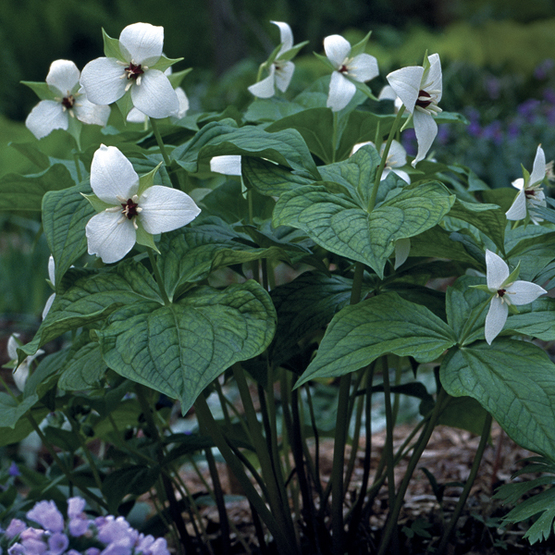
Trilliums (Trillium spp. and cvs.) are among the native woodland plants I treasure most. I cannot imagine late winter and spring without their symmetry of threes: three leaves, three sepals, and three petals—hence, the common name “trinity flower.” With more than 40 species to drool over, these jewels of the forest floor are a collector’s dream. Some big, some small, some white, some deep red—trilliums have a lot to offer. Most species originated in various regions of the United States, offering many gardeners a chance to grow these remarkable plants. Best of all, trilliums are fairly easygoing and will flourish and blend beautifully with other woodland plants.
Every trillium is special in its own way. I encourage gardeners to seek out the best plants for their gardens. When choosing trilliums, however, be aware that some plants are protected under law and should not be dug from state or federal lands. At least one species, Trillium persistens, is listed as endangered by the federal government.
A trillium species may be listed as endangered in one state and not in another; check with your state department of natural resources before making your selection. Almost all trilliums sold from nurseries originate from some source in nature, such as private property, public land with permits, or rescues from construction projects. Be sure you acquire your plants from a reputable source; nursery-propagated stock is always preferable.
Trilliums
Trillium spp. and cvs.
(TRIL-lee-um)
• Origin: More than 40 deciduous, perennial species belong to this genus, most of which are native to the United States. There are some named cultivars and natural hybrids.
• Conditions: Trillium species vary in hardiness, with a range of USDA Hardiness Zones 4 to 9. They require full to partial shade and rich, moist, well-drained soil with a neutral to acidic pH.
• Pests and Diseases: Other than being browsed by deer, trilliums suffer from no serious pest or disease problems.
• Planting: The best time to plant and divide trilliums is when they are dormant in late summer and early fall.
• Maintenance: Plants benefit from an annual dose of rich organic matter.
• Propagation: Trilliums are readily propagated by division. Plants can be grown from seed, but it can take up to two years for fresh seed to germinate and another five to seven years for plants to bloom. Growing plants from cuttings has limited success.
East and Midwest Gems

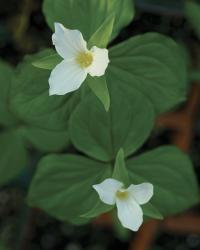
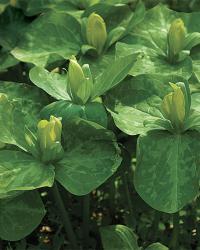
While the flowering period for trilliums varies depending on where you live, my trillium season begins in late winter or early spring. One of the first and most plentiful to appear in early spring is the recurved or prairie trillium (T. recurvatum, Zones 5–8). This plant is easily recognized. The maroon bloom sets down on the main stalk in a well formed by the plant’s three leaves. It can be 12 to 18 inches tall. Look for individuals with nice mottling in the leaves. Plants are tolerant of transplanting, and rhizomes will often produce offsets that quickly form new stems and clumps.
In midspring, the showy great white trillium (T. grandiflorum, Zones 4–7) sends out large white blooms with petals that often reach more than 2 inches in length. The plants themselves can grow to 18 inches tall in rich soil, but for me, they hover around 12 inches. The large leaves are veined but not mottled. Some plants will produce flowers that turn pink as they age. There are also semi-double and fully double forms that are worth seeking out.
One of the last trilliums to bloom for me in mid- to late spring is one I’m especially fond of: yellow trillium (T. luteum, Zones 5–7). Both the leaves and the yellow bloom are sessile, meaning stalkless. The bloom smells like lemon oil, and the foliage is richly mottled with silvery overcasts at the center. Plants have a stocky appearance and normally shoot up to a height of 14 inches in my garden.
Plant and divide in fall
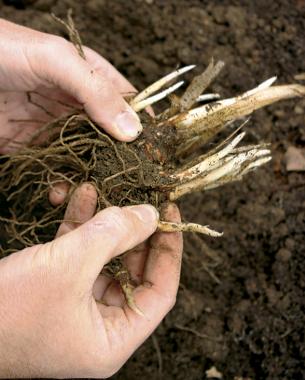
Trilliums occupy a unique niche in nature. They are one of the first beacons of spring as they begin breaking dormancy in late winter. They emerge, flower, and are decked in full foliage before the woodland leaf canopy has completely developed. Then plants set seed and begin to store their reserves for next year just as shrubs and trees take command of available light. By midsummer, when the roots of trees commandeer all of the moisture in the soil, trilliums take the easy way out and begin to go dormant. The best time to plant and divide them is during dormancy in late summer and fall (around the time you would plant early-blooming bulbs). Simply lift dormant plants with a garden fork, divide the rhizomes, and plant the mother plant and offshoots about 2 to 3 inches below the soil surface.
Where I live in southern Indiana, I have close to the ideal conditions for growing trilliums. My garden sits on the north side of a hill and is shaded under a mixture of mature shrubs and trees. The soil is clay with a neutral to slightly acidic pH. Because most trilliums favor organic, loamy soils, I heavily amend mine with a rich layer of chopped leaves.
When it comes to growing trilliums outside of their native region, some specialized amendments are often necessary. Certain species from west of the Rockies do not flourish in eastern gardens and vice versa. Likewise, some southern species must be sited carefully to be successfully grown in northern gardens. Many times, plants only need a pH adjustment when growing them outside of their native region.
Because trilliums go dormant by midsummer, I like to pair them with plants that look good for the remainder of the gardening season. I find that ground covers that allow trilliums to pop through them are the best companions. They provide a good backdrop and keep plantings going strong later into the season. The graceful habits and textural leaves of small- to medium-size ferns also combine well with trilliums and fill late-season vacancies.
Yankee Woodlanders
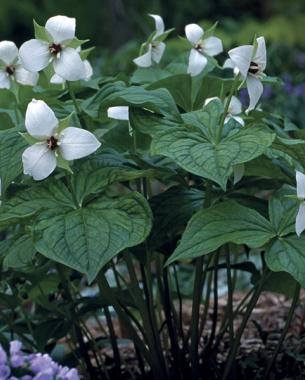
Photo/Illustration: Gene Bush
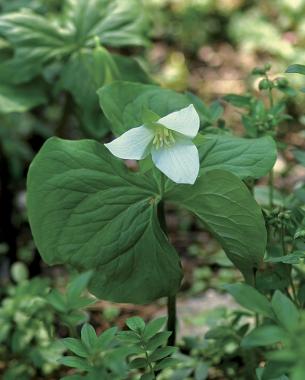
If you garden in the North, there are several trillium species native to your area; two in particular are stinking Benjamin and bent trillium.
Stinking Benjamin (T. erectum, Zones 4–7) is not truly a stinker unless you get your nose right in there; the flowers smell like pond water. From a normal viewing distance, however, all you will experience is a magnificent show. The flowers open with 2-inch-long, chocolate to reddish purple petals in mid- to late spring. The foliage is solid green with pointed tips and sits atop 14- to 20-inch-tall stalks. Look for the white-blooming form, T. erectum var. album, which retains a dark ovary (a raised, podlike area) at the center of each flower.
Bent trillium (T. flexipes, Zones 4–7) usually reveals its flowers above the foliage in midspring. As the flower ages, its stem bends downward, hiding the flower beneath the leaves. The white petals can grow to more than an inch long. Occasionally, a maroon flower occurs, but it retains the white ovary. This is a highly variable plant from one region to another. When grown farther south, some populations are quite large in size, reaching almost 2 feet tall, and flowers are held well above the foliage.
Southern belles
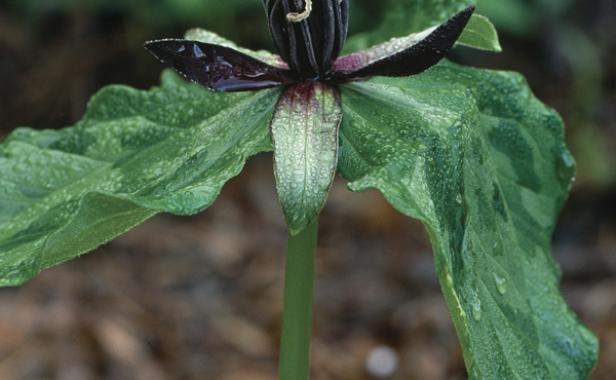
For gardeners in the South, I recommend 8-inch-tall dwarf wake-robin (T. pusillum, Zones 5–9). The foliage of this little jewel emerges a deep purple-black-green, while the blooms are white with rippled petals. As plants mature, the foliage becomes medium green and the blooms turn pink, then lavender-purple. Leaves are unusually small and narrow for a trillium, reaching 1 inch wide and 3 inches long. And after transplanting, its rhizomes are quick to form colonies.
Propeller toad shade (T. stamineum, Zones 5–8) is noted for its unique form. Each narrow, chocolate-colored petal is more than an inch long and twists like a propeller above the slightly mottled leaves. The plant’s appearance is stocky, and its height is just over a foot. It pairs well with Jacobs’s ladder (Polemonium reptans, Zones 3–8) and creeping phlox (Phlox stolonifera cvs., Zones 4–8) in spring.


Photo/Illustration: Gene Bush
Sweet Beth (T. vaseyi, Zones 5–8) is a must-have for the shade garden. It is among the largest of all trilliums at just under 2 feet tall when grown in rich, moist soil. Sweet Beth’s velvety chocolate-red blooms can be over 4 inches wide, and the petal tips strongly reflex, pushing the stamens forward. Mature blooms appear in mid- to late spring just beneath the large leaves. I have seen white-blooming forms of Sweet Beth out and about. This plant grows well in the North, but it excels in its native habitat of Tennessee and northern Georgia.
West Coast Jewels
There are a couple of trilliums that are native to areas west of the Rocky Mountains. The first is the giant trillium (T. chloropetalum, Zones 6–9). With an overall height of about 2 feet and leaves that reach 7 or 8 inches long, this plant is sure to be noticed. The leaves are usually darkly mottled, and the bloom color can range from white to deep purple-black. The flowers make their debut around early to mid-spring. In its native habitat, giant trillium can be found tucked in the redwood forests of the Pacific Northwest.
The western white trillium (T. ovatum, Zones 5–8) is another plant that can be found among the redwoods. The equivalent of the eastern great white trillium, this plant has solid green leaves, which grow quite wide compared to other trilliums. The flowers open in early spring. The petals are narrower than those of T. grandiflorum and turn from snow white to a lovely shade of lavender-red when aging.
Fine Gardening Recommended Products

Corona® Multi-Purpose Metal Mini Garden Shovel
Fine Gardening receives a commission for items purchased through links on this site, including Amazon Associates and other affiliate advertising programs.

SHOWA Atlas 370B Nitrile Palm Coating Gloves, Black, Medium (Pack of 12 Pairs)
Fine Gardening receives a commission for items purchased through links on this site, including Amazon Associates and other affiliate advertising programs.
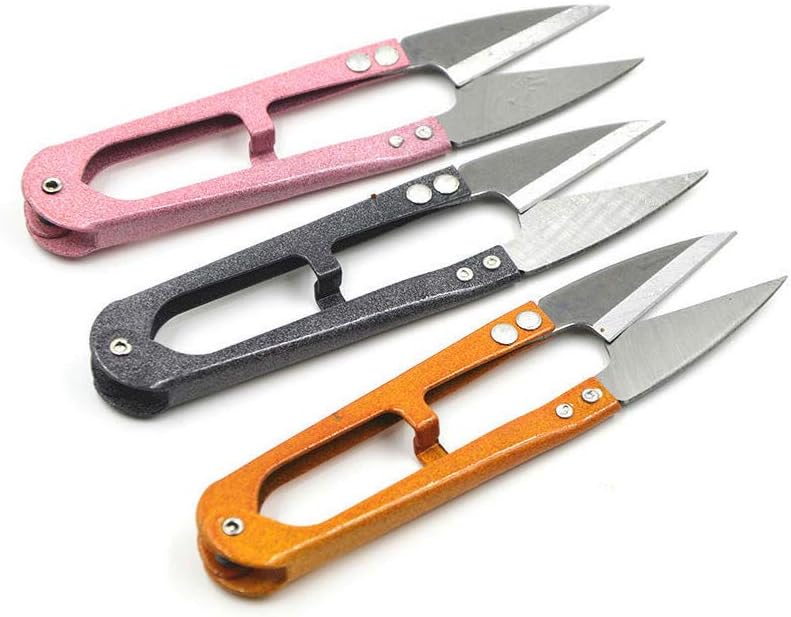
3 Pack 4.1Inch Bonsai Pruning Scissors
Fine Gardening receives a commission for items purchased through links on this site, including Amazon Associates and other affiliate advertising programs.

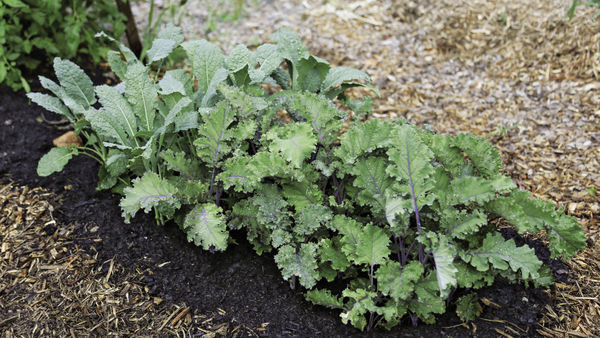
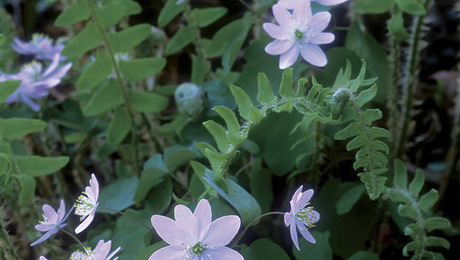
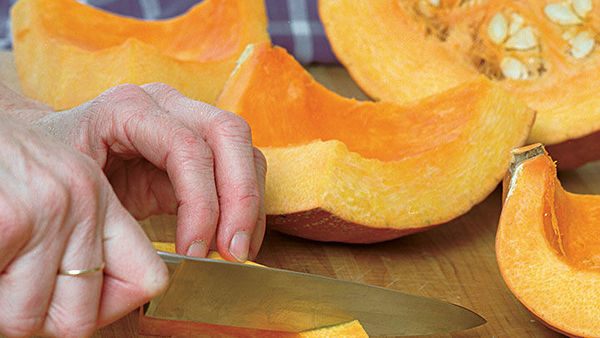
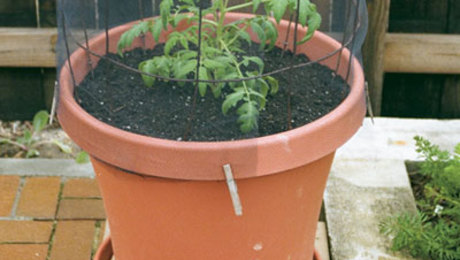













Comments
Log in or create an account to post a comment.
Sign up Log in